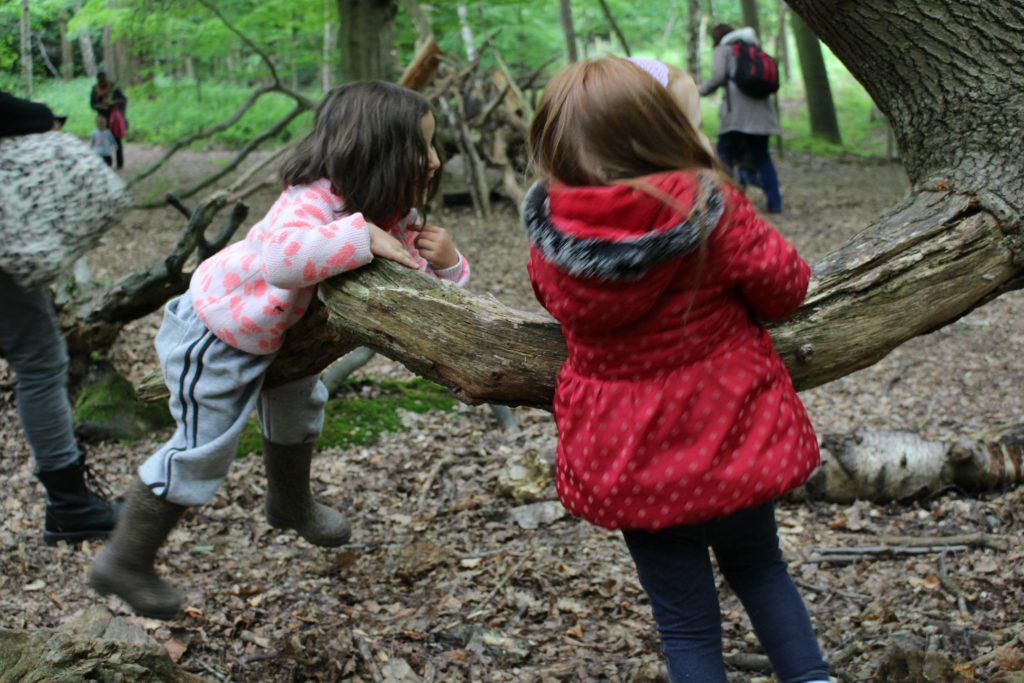Letter to the next Prime Minister
The letter below sets out our key asks for the next government.
by Kathryn Solly
The benefits of outdoor learning in the early years have now been firmly recognised for both educators and young children’s learning and development. Being outside in the fresh air for three hours every day helps benefit brain and body functioning. Simply being outside improves health, social and emotional wellbeing, improved immunity, sight, sensorial and hearing development, neuro and physical development, and cognitive enhancement at a child’s unique pace.
Children are born ready to be and learn outside and with increasing sedentary lifestyles, movement outside is a critical life opportunity. They are innately curious, driven learners who flourish if allowed to find out more about the world around them through playful contact throughout the year. Investigative, imaginative and inventive STEAM possibilities abound through a variety of natural materials providing authentic experiences. This hands-on, experiential learning can use the whole body and mind through a variety of experiences and outdoor learning activities. Outdoor learning also nourishes opportunities for awe and wonder which allows each child to revisit their fascinations, schema and dispositions.
Ample time and opportunities outdoors enable all children whatever their starting point (including those with SEND) to explore, go on adventures and build up their confidence, self-esteem, trust and security by using intelligent risk benefit management. Rather than being cosseted indoors, going outside to learn provides rich and variety opportunities and activities which can be tailored to each unique child through interactions with all kinds of natural elements and sensorial opportunities. Consider the possibilities of hiding in bushes, climbing up onto a tree trunk, feeding the birds, gardening, exploring clay, mud, sand, water…..These activities also nourish their ecological identity and understanding.
Many educators would LOVE to incorporate more nature and outdoors in their time with children, but there is often a reluctance to venture outside the classroom for various (good) reasons. They firstly have to become comfortable themselves outdoors and the support, encouragement and guidance of an outdoor leader or champion, or leadership team who understand the value of outdoors is critical. Understanding their context outside is also crucial as even the smallest space has development possibilities. They also (like the children) need good clothing and the chance to build up their own confidence, understanding through quality CPD and thus enhance their repertoire of outdoor learning. By finding solutions to issues together as a team and taking families with you is a firm starting point for outdoor learning.
Outdoor learning is whatever you want to make it but the important thing is to use it as much as possible for the benefit of the children. It enriches and extends the whole curriculum through its flexibility and openness to adapt to varied unique child interests and agendas. See outdoors as a tapestry to embroider alongside the assistance of the children and nature is a great starting point. From counting seeds to plant, comparing and sorting shades of autumn leaves, measuring rainfall, mixing mud to different consistencies for daubing marks, modelling and designing patterns etc. The quality of adult /child interactions is infinite outdoors and when supported through quality simple resources such as magnifying glasses and fiction and non-fiction books which link to child interests, adults and children learn together.
Kathryn Solly is a specialist Early Years trainer and consultant. Previously she was the Headteacher of the historic and diverse Chelsea Open Air Nursery School and Children’s Centre for nearly 17 years. Kathryn facilitates more in depth early years CPD training courses on this topic for Early Education.

The letter below sets out our key asks for the next government.
Clare Devlin, Early Education Associate What aspects of physical development should we focus on within the Early Years Foundation Stage (EYFS) and other early years
by Anni McTavish What are treasure baskets? “Treasure Baskets” are a collection of ordinary household objects, that are chosen to offer variety and fascination for
by Debi Keyte- Hartland The term “Loose Parts” was coined by Simon Nicholson, a British architect and designer whose parents were artists Barbara Hepworth and
by Helen J Williams Early mathematics is essential for children’s full development, it is also predictive of later, wider achievement. Early mathematical learning is critical
What is continuous provision in EYFS? By Ben White Continuous provision in EYFS refers to the resources and learning opportunities accessible to children all of
The Families’ Access to Nature Project was undertaken by the Froebel Trust and Early Education between October 2021 and January 2022. Children, their parents, and
by Leslie Patterson At the very beginning of the 1970s I was lucky enough to attend a playschool, at a time when there was very
Guest blog by Sara Knight Why are opportunities for risk and adventure essential for normal development in the early years? Tim Gill (2007) identifies four
Guest blog from Dr Elizabeth Byrne, University of Cambridge Most educators will be aware that “what works” in support of children’s learning and development is
Why go outside? Big movers Have you ever been in an open space with young children? The first thing they want to do is to
Taking care of a baby is tiring work, with a lot of feeding, nappies and broken nights. When you are exhausted, it can be harder
Here are some links to resources to support your play. Loose parts play tookit is such a rich and comprehensive free publication from Inspiring Scotland to
When writing our January Early Years Teaching News, I tweeted a survey to ask if practitioners and leaders would like information about ICT or outside
This content by Jan White comes from our out of print leaflet “The Sky is the Limit: Babies and Toddlers Outdoors: developing thinking, provision and practice”
Healthy settling for high wellbeing How can we best help children feel at ease so that they are secure and settled in their new provision?









Early Education
2 Victoria Square
St Albans
AL1 3TF
T: 01727 884925
E: office@early-education.org.uk